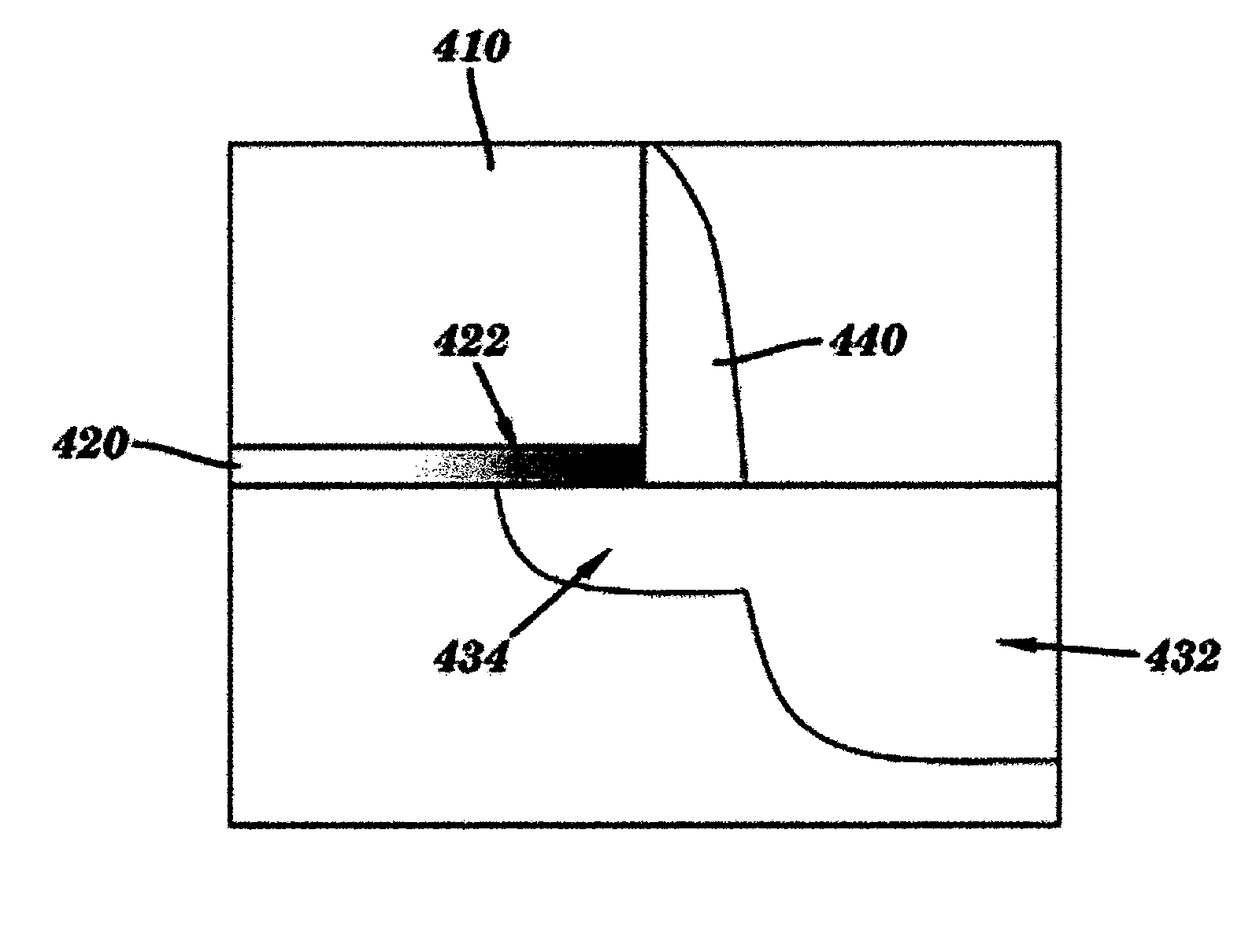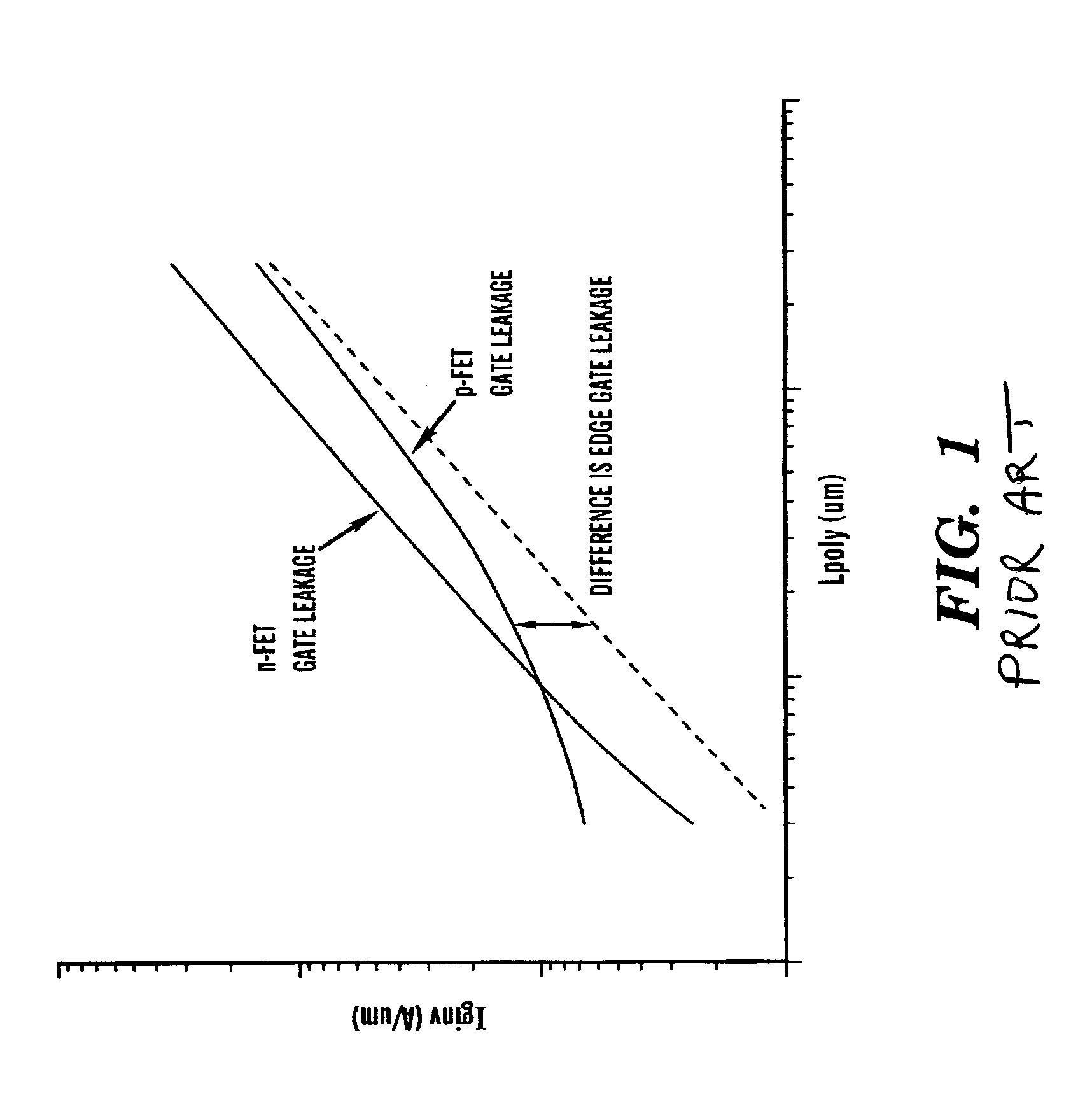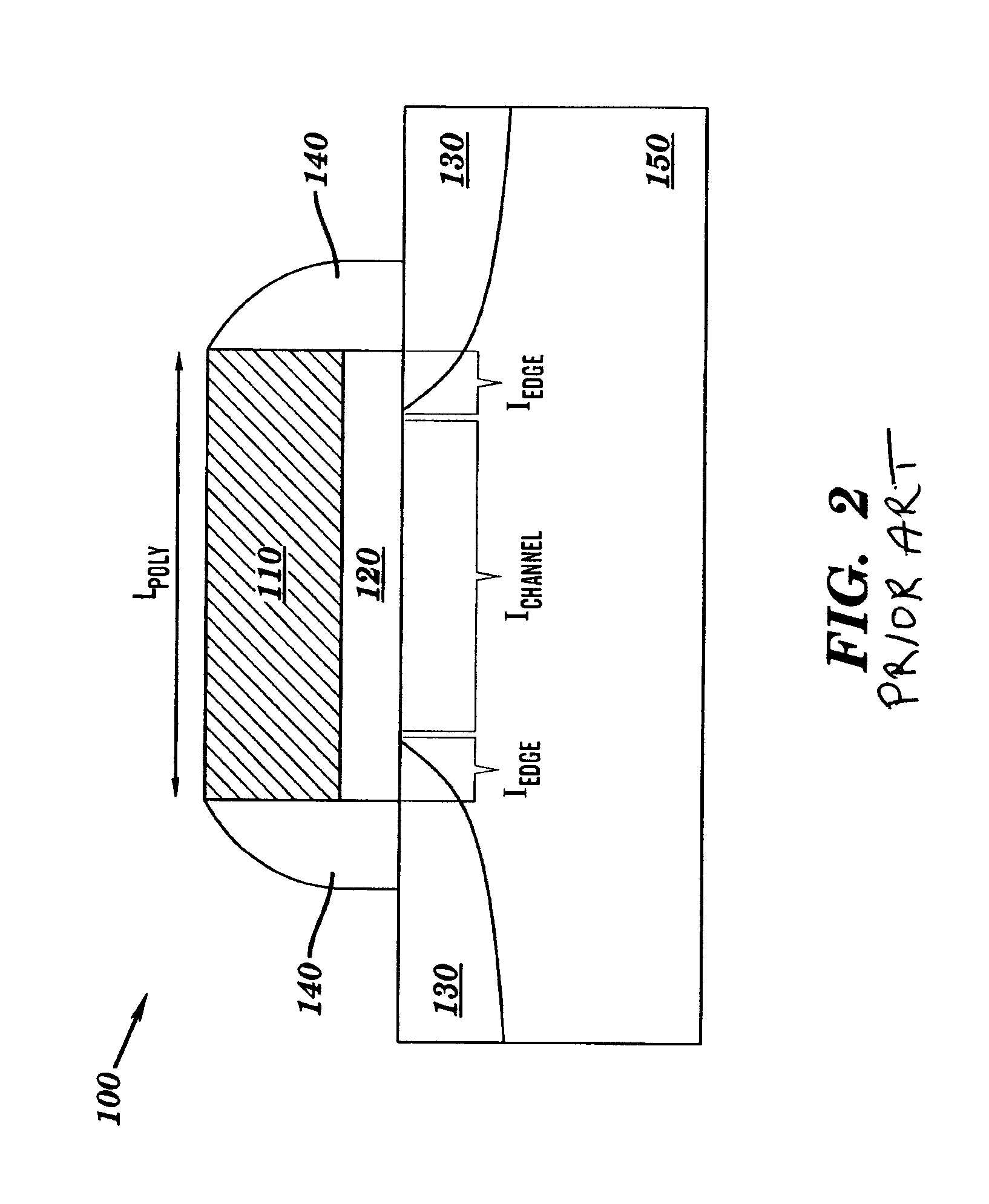Method for forming semiconductor devices having reduced gate edge leakage current
a technology of gate edge leakage current and semiconductor device, which is applied in the field of improved semiconductor gate dielectric and field effect transistor (fet) processing, can solve the problems of poor dielectric or device reliability at or near the edges of fet device, high gate leakage current, gate dielectric,
- Summary
- Abstract
- Description
- Claims
- Application Information
AI Technical Summary
Benefits of technology
Problems solved by technology
Method used
Image
Examples
Embodiment Construction
[0020]The present invention provides methods for forming FET devices that have reduced or suppressed the aforementioned problems by processing the gate stack of the FET devices in accordance with low temperature nitridation and plasma re-oxidation processes, and FET devices and circuits formed in accordance therefrom.
[0021]A method of carrying out the present invention is illustrated in FIGS. 3A-3G, which are cross-sectional views of a semiconductor device at various stages of the method. Semiconductor substrate 310 is provided for forming n-FET and / or p-FET type devices as shown in FIG. 3A. Substrate 310 can comprise any suitable semiconductor material such as silicon, bulk silicon, silicon-on-insulator (“SOI”), SiGe, Ge, GaAs, or the like.
[0022]With reference to FIG. 3B, an insulating layer 312 is formed on an upper surface of substrate 310. For example, insulating layer 312 can be deposited or grown on the substrate. Insulating layer 312 can comprise normal-k insulative materials...
PUM
 Login to View More
Login to View More Abstract
Description
Claims
Application Information
 Login to View More
Login to View More - R&D
- Intellectual Property
- Life Sciences
- Materials
- Tech Scout
- Unparalleled Data Quality
- Higher Quality Content
- 60% Fewer Hallucinations
Browse by: Latest US Patents, China's latest patents, Technical Efficacy Thesaurus, Application Domain, Technology Topic, Popular Technical Reports.
© 2025 PatSnap. All rights reserved.Legal|Privacy policy|Modern Slavery Act Transparency Statement|Sitemap|About US| Contact US: help@patsnap.com



